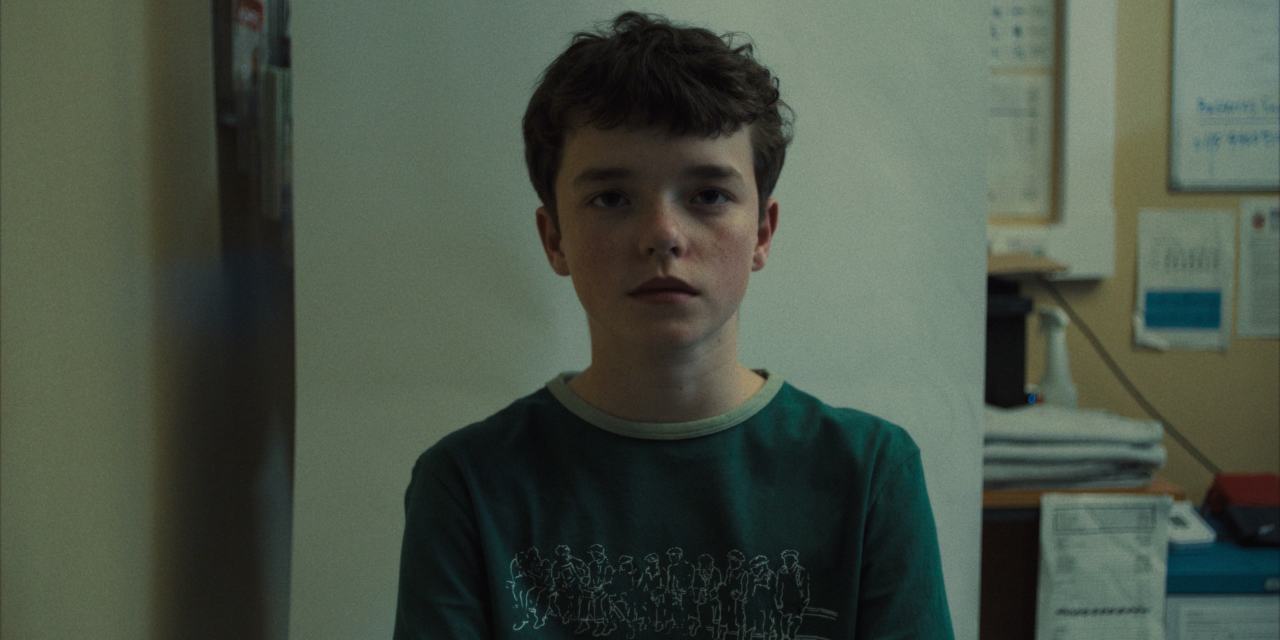Even if you haven’t seen Adolescence, currently the most-watched show on Netflix, you’ll doubtless be aware – or think you’re aware – of its central themes: knife crime, social media, the manosphere and its pernicious influence on teenage boys. In other words, ‘the Andrew Tate shite’, as the show’s (female) detective sergeant sighs at one point.
Critics have gushed that this is ‘TV perfection’ (Times, Guardian) and a landmark series ‘so powerful it could save lives’ (Guardian again). Each of the four one-hour episodes is apparently shot in one take, which is the sort of thing that thrills male critics but for ordinary viewers can, at times, feel self-indulgent and contrived.
Much has been made of Owen Cooper’s performance as 13-year-old murderer Jamie, and it is remarkable. But elsewhere, the psychologising is dubious – does disappointing your dad on the football field really push boys into weaponised misogyny?
Besides, boys who stab classmates in the real world (like the 14-year-old assailant of Ava White, the 12-year-old killed at a bus stop in Liverpool, whose plight inspired the series’ star and co-writer Stephen Graham), tend to have ‘previous’ and grow up in chronic dysfunction. They don’t, generally, emerge fully formed like Athena from the head of Zeus from a decent, hard-working, two-parent family where the dad has a bit of a temper but, we’re told, has only ever taken it out on a shed, never his wife or kids.
But my overwhelming take-home from Adolescence – that no one, not the fictitious Miller family whose lives are torpedoed when Jamie is arrested, nor a single commentator that I can see has picked up on – is the corrosive enabler in all of this. And it is the one thing that we parents can control – access to smartphones.
Everyone at Jamie’s school has one. Jamie, it emerges, has been bullied on Instagram by his victim, Katie. ‘Why do you have an Instagram account?’ asks the psychologist, played by Erin Doherty, in episode three in a masterful two-hander. ‘I need one,’ he replies. But no 13-year-old needs an Instagram account (though it’s the minimum age for the platform), or the means to access one.
In episode two at Jamie’s comp – the sort of bog-standard establishment that will have a certain kind of viewer hoping granny’s amenable to assisted dying so they can keep paying the school fees – teenagers mass like zombies in Shaun of the Dead, a phone up in front of each blank face. They whip them out to film a playground fight, pull them out in class as hopeless teachers fail to keep order.
When the bell rings for the end of the day, they trudge home with phones aloft like the teenagers I see in our local market town after school. The girls have their skirts rucked up around their hips — but what’s the point when the boys are looking at their phones, not their legs? There is no interaction IRL, as they say, just emojis and social media and WhatsApp and sad little lives lived online with unfettered access to all the bullying and porn and toxic content that will end your childhood at an age when, like Jamie, you should still be climbing trees and reading the Beano.
Smartphones are very much on my mind at the moment as my eldest son is off to senior school in September and 11, if not before, is when the clamouring begins. ‘Do you know how many of my friends have smartphones?’ asks his younger brother, aged nine. No, and I don’t care. I’ve signed up to the Smartphone Free Childhood movement, though I don’t think it goes far enough. Parents who sign the pact agree to ‘wait until at least the end of Year 9 before getting them a smartphone’.
The phone takes Jamie away from his drawing, the one thing he shows a talent for, and sucks him into a cesspit of online bullying and content that he doesn’t really understand
But in Year 9, the part of the brain that makes good – or bad – choices, the pre-frontal cortex, is still in its infancy, not reaching maturity until around the age of 25. I can’t control what my children do after 18, but I’d sooner buy them cigarettes than a smartphone while they live at home. That way there’s an outside chance of them making it out of their teens without needing medicating for anxiety.
The best schools, both state and private, don’t allow smartphones. Katharine Birbalsingh of the Michaela Academy in north-west London, aka ‘Britain’s strictest headteacher’, wants the government to ban them for pupils under 16 during school hours (again, I don’t think this goes far enough – children shouldn’t have them at all). Eton provided ‘brick’ phones to all first years in September, though mothers of older boys tell me that the school let their children down, insisting their intake had not only phone but smartphones (taken away at 10 p.m.), then giving that year compulsory iPads without consulting parents.
Smartphone policy has dictated our choice of secondary school. Our local comp has a lot going for it: the head boy and girl of a couple of years ago are both now at Cambridge; GCSEs can be completed in a year from Year 9 onwards. But as we were being shown round, the otherwise bright and personable girl who was our guide suddenly pulled out her phone and began to doom-scroll. ‘Are you allowed those in school?’ I asked. ‘Oh yes,’ she said, without looking up, ‘just not in the classroom.’
That’s why we’ll be bussing our son an hour away to a senior school that doesn’t allow smartphones. He’ll have an Apple Watch instead, so he’ll be able to text and call – and that’s it. I’ve made a pact that I’ll give up my iPhone at the same time. It disturbs me how easily I’ve managed to go on the wagon for Lent, yet can’t last more than a few minutes without checking my phone. Steve Jobs was well aware of the addictive properties of these devices – that’s why he didn’t let his kids have the products he created.
But far worse than that, phones are also the means by which children can access ‘the Andrew Tate shite’, the misogyny, the abuse, apps like Snapchat so they can disseminate pornographic photos of classmates (as Jamie and his friends do in Adolescence). The phone takes Jamie away from his drawing, the one thing he shows a talent for, and sucks him into a cesspit of online bullying and content that he doesn’t really understand. ‘Everyone keeps going on about the incel stuff so I had a look but I didn’t like it,’ he tells the psychologist – then, in the most disturbing scene of all, flips and goes from child to chilling in less than a second, spewing the violent misogynist bile he has imbibed from his phone at her.
In the final episode of Adolescence, Jamie’s parents agonise over where they went wrong. They recall how he stopped drawing after they gave him a computer, but he was ‘safe in his bedroom’. Nothing about the computer in his pocket. There’s a long tracking scene of the three remaining family members in the father’s van; the daughter sitting between her parents gazes gormlessly at her phone throughout. They’ve learned nothing. ‘We can’t blame ourselves,’ they conclude.
‘The world’s changed, hasn’t it,’ say mums at the school gate, shrugging over ‘having’ to give in to the ‘peer pressure’. Yes, the world has changed, which is why the smartphone ban for children is crucial. We can’t, at grassroots level, do much, if anything, to prevent toxic masculinity being spread by social media and the internet. But stopping kids from having a smartphone would vastly reduce their exposure to the bullying – and the Andrew Tate shite.








Comments